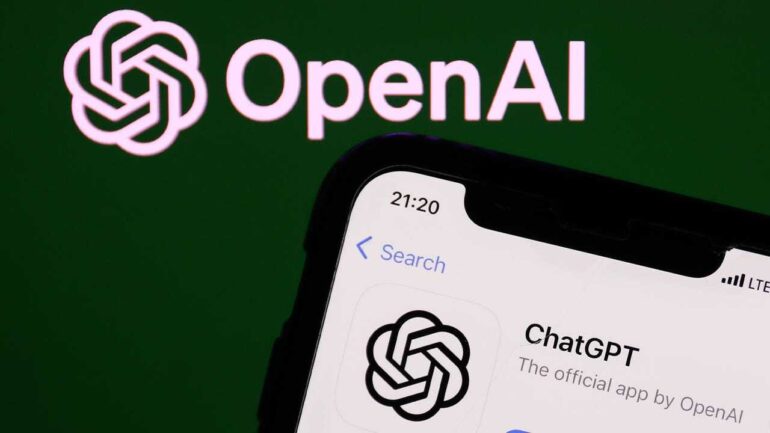TL;DR:
- OpenAI’s dominance in large language models (LLMs) faces increasing competition.
- Major tech firms like Meta and Google introduced their LLMs.
- Businesses opt for multiple LLM providers to mitigate risks and enhance adaptability.
- Cost-conscious startups blend LLMs to save on computational expenses.
- Capacity constraints for AI model training necessitate collaborations with industry giants.
- Diversifying LLM usage safeguards against potential price hikes from OpenAI.
Main AI News:
In the ever-evolving realm of large language models (LLMs), OpenAI has long been a dominant force. Its latest offering, GPT-4, unveiled in March, stands as a testament to its supremacy in the market. The sheer magnitude of OpenAI’s LLM capabilities, which power virtual assistants like ChatGPT, enables the extraction of copious data, ranging from baseball statistics to crafting compelling resumes. Yet, amidst the rapid evolution of the AI industry, businesses venturing into AI applications are exploring alternative avenues, questioning OpenAI’s unchallenged reign in the generative AI sphere.
Disrupting OpenAI: A Worthy Pursuit
The challenge to OpenAI’s preeminence is no small feat, as acknowledged by Alexandre Lebrun, CEO of Nabla, a Paris-based startup specializing in AI note-taking software for clinical settings. Lebrun suggests, “Many smart people with substantial resources are endeavoring to break OpenAI’s dominance, and we may anticipate significant shifts in the landscape next year.”
The Expanding Landscape of LLM Providers
Major tech players like Meta and Google are entering the arena with their own LLMs, creating a diverse array of options for businesses. Emerging players like Anthropic, Stability AI, and Mosaic further contribute to the burgeoning market of LLM providers. As the AI industry hurtles forward at breakneck speed, companies are hedging their bets by incorporating multiple LLMs into their strategies. This strategic move mitigates the risk of a single player surpassing OpenAI and positions companies to swiftly adapt to changing circumstances.
Cisco, a prominent telecom and networking company, exemplifies this adaptive approach. Anurag Dhingra, Cisco’s chief technology officer, notes that no single LLM model is universally effective. Cisco maintains contracts with various LLM providers, including OpenAI and Google, and remains open to additional partnerships. They continually assess LLM performance and choose models based on specific use cases. For summarization tasks, GPT 3.5 is preferred, while smaller models suffice for evaluating customer call trends. Dhingra states, “Instead of picking one model as the ultimate solution, we opt for flexibility.”
Embracing Cost-Effective Alternatives
For some enterprises, particularly cash-strapped startups harnessing LLMs to empower their products, cost savings are paramount. Training AI models can entail exorbitant computational expenses. Numerade, an online education company headquartered in Los Angeles, exemplifies this cost-conscious approach. They leverage a blend of LLM providers, which offer more budget-friendly alternatives compared to OpenAI. This cost-effective strategy is particularly advantageous when a company possesses proprietary data. Alex Lee, CTO of Numerade, explains their approach, stating, “We use a mix of LLM providers from Google, Meta, Mosaic, Anthropic, among others, fine-tuned to meet our unique requirements.”
Navigating Capacity Constraints
Immediate challenges also loom large in the AI landscape, such as capacity limitations for training AI models. With the surging demand for OpenAI’s GPT-4, servers often operate at maximum capacity, necessitating additional GPUs for optimal performance—a predicament that invariably leads to Nvidia, which itself faces capacity constraints. Scaling startups must ensure uninterrupted access to GPT-4, prompting collaborations with industry giants like Microsoft, the host of OpenAI’s model, to secure additional capacity. Lebrun cautions that securing adequate capacity may be a formidable task for smaller companies, hence the use of open-sourced LLMs from Meta and Mistral as a safeguard.
Diversification as a Shield Against Future Price Hikes
Lastly, diversifying LLM usage acts as a defense mechanism against potential price hikes from OpenAI as competitors gain ground. As Lebrun points out, established corporations may wield influence with Microsoft to secure the necessary resources, but smaller entities may face challenges in this regard. Consequently, adopting different LLM models offers insurance against future price escalations from OpenAI as market dynamics shift.
Conclusion:
The landscape of generative AI is evolving rapidly, and businesses are strategically diversifying their LLM dependencies to navigate the dynamic terrain. OpenAI’s dominance remains unchallenged for now, but the winds of change are blowing, and the smart money is on adaptability and cost-effectiveness.

